Railways do more than move passengers from one point to another. They connect people to the world, linking cities, cultures, and communities across vast distances—just like Remitly helps people move money across borders quickly, easily, and securely.
In this blog, we’re sharing some of the world’s most amazing railway journeys; odysseys that have the power to bring people together.
A quick history of train travel
Long before travellers were taking scenic journeys between cities and even across countries, coal, timber, and other materials were being moved around on tracks, pulled by oxen, horses, or other draft animals—most commonly in mines, ports or military installations.
Things changed in the early 19th century, when George Stevenson built the first steam locomotive designed to carry passengers. In 1825, the Stockton & Darlington Railway in England started offering trips to paying passengers for just 1 shilling on Locomotion No. 1.
Railways evolved quickly
From those relatively humble beginnings, rail travel grew fast. With steam power becoming more accessible, passenger railways quickly began to expand, to the point where they eventually spanned continents, connecting countries and cities, and making long-distance business and leisure travel a reality.
By the mid-20th century, as cars and air travel became more widespread and affordable, passenger rail routes were unfortunately decommissioned in favour of these modern alternatives. In the UK the infamous Beeching Report saw the closure of thousands of miles of track and hundreds of railway stations in the 1960s, for example.
However, today train travel is making a comeback. Travellers are looking for environmentally friendlier ways to travel, and shifting their focus to enjoying the journey and the scenery, culture, and connection that taking things more slowly offers. So nowadays, while inter-city train travel can be extremely fast, it’s not always about rushing to your destination.
What you need to know before travelling by train
There are few methods of travel that will bring as much of a sense of adventure to your trip as train travel. But there are also some rail travel requirements that you need to take note of before you set off on your journey.
If you’re travelling across international borders, you’ll need a valid passport. Depending on your nationality, where you’re travelling from and where you’re going, you might also need visas or other travel authorisations.
It’s also a good idea to familiarise yourself with border and immigration rules before you set off. Some international rail routes have formal immigration checks at stations and you’ll need to disembark before crossing the border. Others, like those in the Schengen area, allow you to cross from one country to another freely.
Pack smartly
The days of tipping the railway porters to carry your luggage for you are long gone, so packing cleverly is another factor that will make your journey a lot more pleasant. Taking comfortable, breathable clothing and warm layers will help ensure you’re prepared for any weather. Consider snacks, plug adapters, portable chargers, and entertainment options too.
For overnight journeys, extras like an eye mask, ear plugs, or even a light blanket can make it much easier to sleep, which means you’ll be refreshed and ready to explore your destination as soon as you arrive.
Epic rail journeys—take your pick
So you’re packed, passport in hand, and you’re ready to go. Let’s have a look at some of the great modern-day railway journeys available. All the prices given are approximate, and correct at the time of writing.
Eurostar: from London to Europe in a jiffy
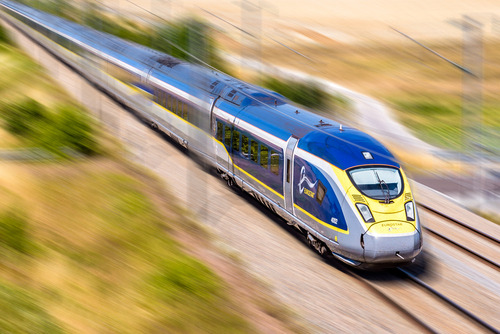
Start point: London
Destination options: Paris, Brussels, Amsterdam
Trip duration: Approx. 2h 30m to Paris, 2h to Brussels, and 4h to Amsterdam
Estimated cost: From £35 GBP one way, but you have to book well in advance, travel off-peak and carry minimal baggage to get this low a price. More typically, expect prices to start around the £50–£75 mark.
Sights to see: Rolling countryside of Kent, landscapes of northern France and Belgium
When the Eurostar sets off, you’ll watch London’s skyline give way to the green fields of Kent before the train plunges into the famous Channel Tunnel.
Around 30 minutes later, you’ll emerge into the French and Belgian countryside, a blur of quaint villages, farmland, and wide blue skies that hint to the adventure ahead.
As we mentioned above, tickets can get a lot more expensive if you’re planning on travelling during peak times or booking close to your departure date. So it’s a good idea to plan your route ahead of time and book early.
Bernina Express: crossing the Swiss and Italian Alps
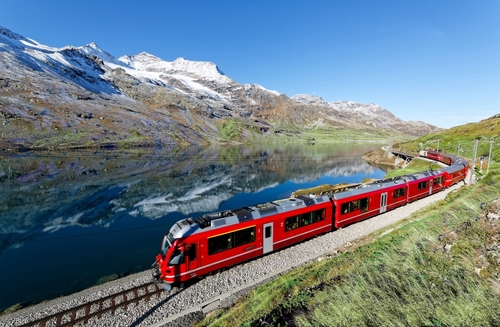
Start point: Chur, Switzerland, or St Moritz, Switzerland (summer only)
Destination: Tirano, Italy
Trip duration: Approx. 4h to 4h 30m (Chur—Tirano), 2h 30m (St Mortiz—Tirano)
Estimated cost: Varies depending on the route
Sights to see: Morteratsch Glacier, Lej Pitschen, Lej Nair, Lago Bianco, Landwasser Viaduct, Brusio Spiral Viaduct
Switzerland is renowned for its astounding natural beauty, and the Bernina Express puts you right in the middle of it.
After leaving your point of departure—either Chur or St Moritz in the Graubünden canton—you’ll climb steadily to Ospizio Bernina above Lago Bianco, gliding past alpine meadows, shimmering lakes, and ice-clad peaks, traversing towering viaducts and passing through mountains in impressive tunnels.
Inside the panoramic cars, you can sip on Swiss hot chocolate while you enjoy uninterrupted views of the changing scenery.
Indian Pacific: crossing Australia in style
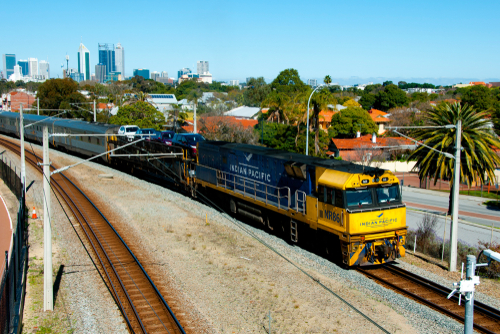
Start point: Perth
Destination: Sydney (via Adelaide)
Trip duration: From 3 nights, 4 days to 4 nights, 5 days.
Estimated cost: Start from around $3,000–$3,500 AUD, approx. £1,600–£1,900 (including meals, drinks, and activities)
Sights to see: Blue Mountains, Broken HIll, Nullabor Plain
Stretching over 2,700 miles, the Indian Pacific journey follows the paths taken by bush pioneers and prospectors in the 19th century.
Over the course of the trip, you’ll observe the rugged Blue Mountains, cross the vast, arid Nullarbor Plain, and drift past remote stations that feel frozen in time. It’s enough to make you fall in love with the land Down Under—whether you’re moving there from the UK or just visiting.
There are also plenty of off-train experiences you can add to your adventure. You’ll get the opportunity to immerse yourself in the history of the gold rush in Kalgoorlie, dine under the stars at Rawlinna, and experience the hustle and bustle of Perth, Sydney, and Adelaide.
Golden Eagle Danube Express: discovering eastern European capitals
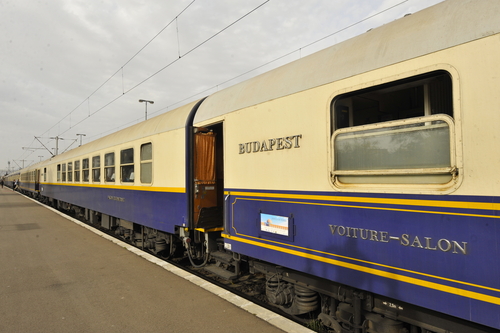
Start point: Budapest
Destination: Vienna
Trip duration: Approx. 12 days (including off-train excursions)
Estimated cost: From approx. £15,000
Sights to see: Hungarian Parliament, Fishermen’s Bastion, Old Town Krakow, Warsaw Royal Castle, Berlin Wall, Elbe Valley, Prague Castle, Semmering Railway Pass, Schönbrunn Palace
The Danube has served as a bridge between empires and ages, shaping trade, culture, and civilisations across thousands of years. And riding the Golden Eagle Danube Express allows you to follow its path, soaking in the rich history that its presence made possible.
This isn’t going to fit everybody’s budget, but if you can afford it, this is a journey of incredible sights from the moment the train pulls out of Budapest. You’ll track old trade routes, ride through Europe’s historical capitals, and roll past scenic natural landscapes as you head toward Vienna, Austria’s architectural gem.
Blue Train: a luxury line through the South African veld
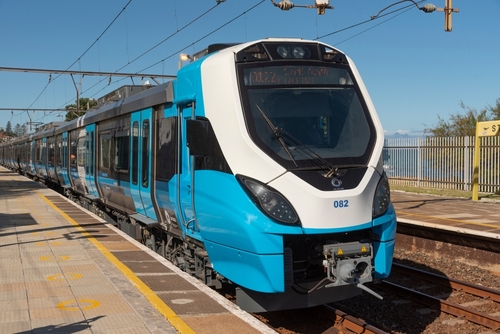
Start point: Pretoria
Destination: Cape Town
Trip duration: 2 nights, 3 days
Estimated cost: From approx. £1,900–£3,200 per passenger, sharing, depending on the chosen suite.
Sights to see: Karoo plains, mountain passes, wineland valleys
The Blue Train gives passengers the chance to step back into the elegance of days gone by. From the polished wood panelling and gold-framed windows of the train cars to the personalised service you’ll receive on board, it’s an indulgent atmosphere, a throw-back to the days of glitz and glamour.
South Africa’s landscapes reveal themselves as you move from the frenetic energy of Pretoria’s central business district to the stark landscape of the semi-desert Karoo, and then on to the lush winelands of the Cape. The Blue Train is a reminder why some journeys are best taken slowly.
Orient Express: a modern legend
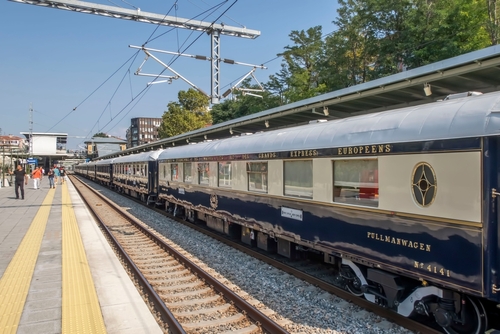
Start point: Paris
Destination: Istanbul
Trip duration: 6 nights
Estimated cost: From approx. £19,000 to £60,000 per passenger depending on accommodation.
Sights to see: Eiffel Tower, Danube valley, Hungarian Parliament, historic Istanbul
This is the one everybody’s heard of. The Orient Express has captured the imaginations of travellers, authors, artists, and movie makers since it first took to the tracks in the 1920s. Relaunching in 2026, the refurbished carriages promise to bring back the elegance of the Art Deco period and golden age of train travel for those who can afford it.
This is not a journey taken in a rush; sit back and enjoy cocktails in the bar car, and indulge in luxurious meals in the dining car as the drama of Europe’s rolling landscapes unfolds outside.
Maple Leaf: the route between two mighty cities
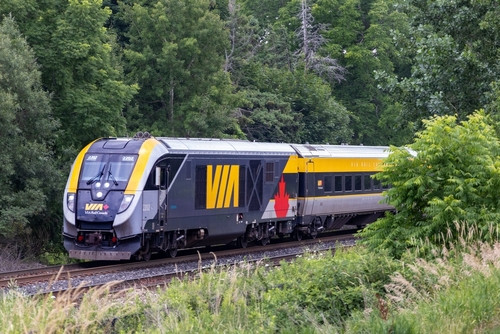
Start point: Toronto
Destination: New York City
Trip duration: Approx. 12 hours
Estimated cost: From approx. £110 for standard class
Sights to see: Hudson River Valley, Finger Lakes Gorges, Niagara Falls
Let’s get back to reality with a service a few more of us can afford. If you’re travelling in Canada it’s definitely worth checking out the Maple Leaf Train. It covers North America’s most scenic cross-border rail route.
After emerging from among the towering buildings of Toronto, you’ll trace a path past the lakefront to the Niagara Peninsula before crossing into the US. From there, the train will snake through the countryside of upstate New York, and past the quaint river towns of the Hudson River. When evening falls, you’ll roll into Manhattan under the glow of city lights.
The full city-to-city journey takes around 12 to 13 hours, including the time you’ll need to disembark to take care of customs and immigration checks at the border. Some services feature unreserved seating in what’s called “coach,” or standard class. So if you don’t have a seat reserved, it’s best to arrive at the station in Toronto early to secure a good spot.
On board for a more connected world
Railways have evolved from simple, localised ways of moving heavy cargo to a way for people to cross entire continents. In the process, a train journey brings you much closer to the people, landscape, and culture of the places you’re travelling through than a flight does.
Rail travel can get you there fast if it’s strictly business, or invite you to slow down and experience the richness of different places and peoples. In the end, what makes a train journey so special isn’t the distance it covers, but the connection it creates between citizens of the world.
FAQs
What’s the longest international train route in the world?
The longest possible train ride in the world is known as the 21-day route. In theory, this route allows you to travel from Portugal to Singapore by train. That said, you would need to change trains multiple times and some portions of the route (e.g. through Ukraine and Russia) that aren’t operational right now. The longest single-train route is the Trans-Siberian Railway.
Do I need special documentation for international rail travel?
Yes. As will all other types of international travel, you’ll need a valid passport. Depending on where you’re from and where you’re going, you may also need a visa or another travel permit.
How do different railway systems connect across borders?
In many places, railway systems connect via interoperable infrastructure—standard track gauges, shared power or adapter systems, and coordinated scheduling. Where they don’t, a gauge-changing system or change of train is necessary. For high-speed international or overnight trains, scheduling is coordinated across borders.
What are the benefits of international rail transport over flying?
Rail transport creates far lower carbon emissions than flying, plus the journey is usually far more scenic and the terminals are often, unlike airports, right in the centre of cities. On top of that, there are often more relaxed rules around luggage and arrival times at the train station than there are in airports.